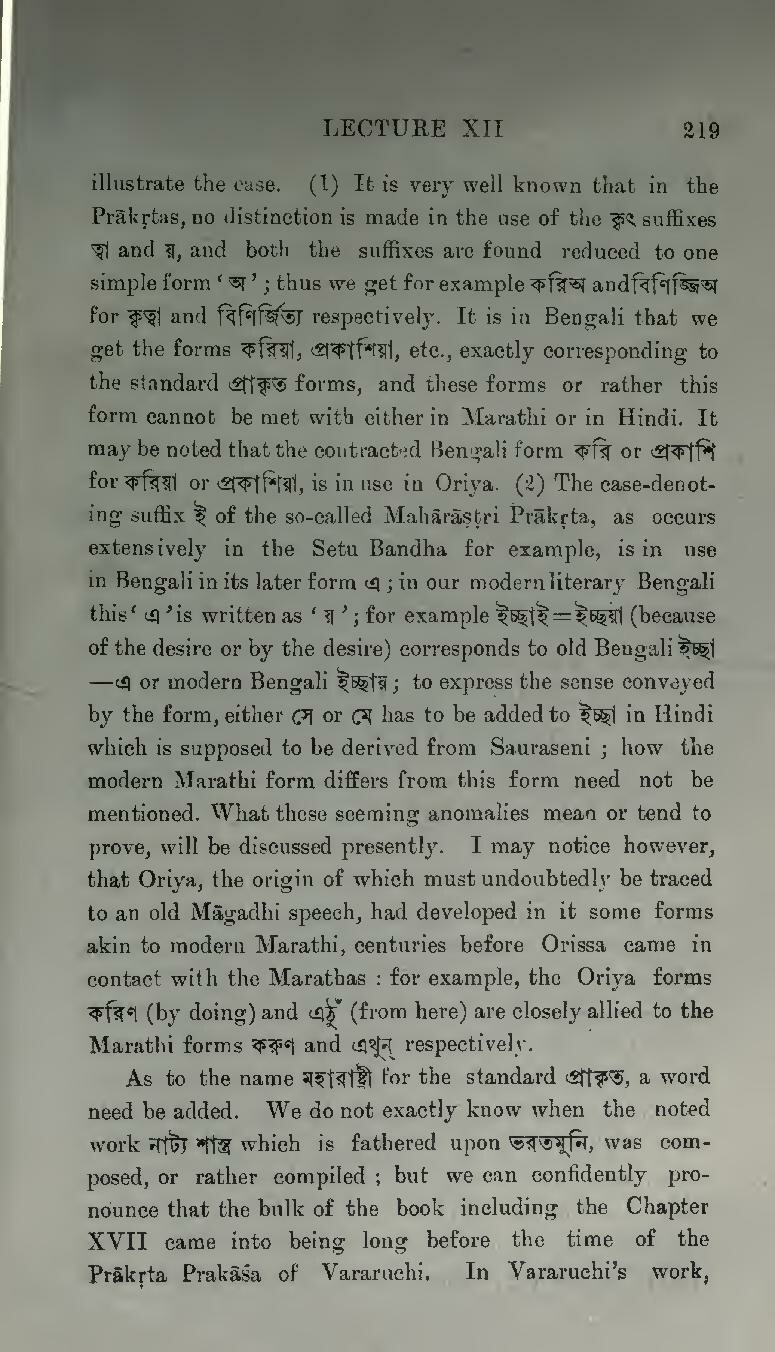illustrate the case. (1) It is very well known that in the Prākṛtas, no distinction is made in the use of the কৃৎ suffixes ত্বা and য়, and both the suffixes are found reduced to one simple form 'অ'; thus we get for example করিঅ and বিণিজ্জিঅ for কৃত্বা and বিণির্জিত্য respectively. It is in Bengali that we get the forms করিয়া, প্রকাশিয়া, etc., exactly corresponding to the standard প্রাকৃত forms, and these forms or rather this form cannot be met with either in Marathi or in Hindi. It may be noted that the contracted Bengali form করি or প্রকাশি for করিয়া or প্রকাশিয়া, is in use in Oriya. (2) The case-denoting suffix ই of the so-called Mahārāṣṭri Prākṛta, as occurs extensively in the Setu Bandha for example, is in use in Bengali in its later form এ; in our modern literary Bengali this 'এ' is written as 'য়'; for example ইচ্ছাই = ইচ্ছয়া (because of the desire or by the desire) corresponds to old Bengali ইচ্ছা-এ or modern Bengali ইচ্ছায়; to express the sense conveyed by the form, either সে or মে has to be added to ইচ্ছা in Hindi which is supposed to be derived from Sauraseni; how the modern Marathi form differs from this form need not be mentioned. What these seeming anomalies mean or tend to prove, will be discussed presently. I may notice however, that Oriya, the origin of which must undoubtedly be traced to an old Māgadhi speech, had developed in it some forms akin to modern Marathi, centuries before Orissa came in contact with the Marathas: for example, the Oriya forms করিণ (by doing) and এঠুঁ (from here) are closely allied to the Marathi forms করুণ and এথুন্ respectively.
As to the name মহারাষ্ট্রী for the standard প্রাকৃত, a word need be added. We do not exactly know when the noted work নাট্য শাস্ত্র which is fathered upon ভরতমুনি, was composed, or rather compiled; but we can confidently pronounce that the bulk of the book including the Chapter XVII came into being long before the time of the Prākṛta Prakāśa of Vararuchi. In Vararuchi's work,
